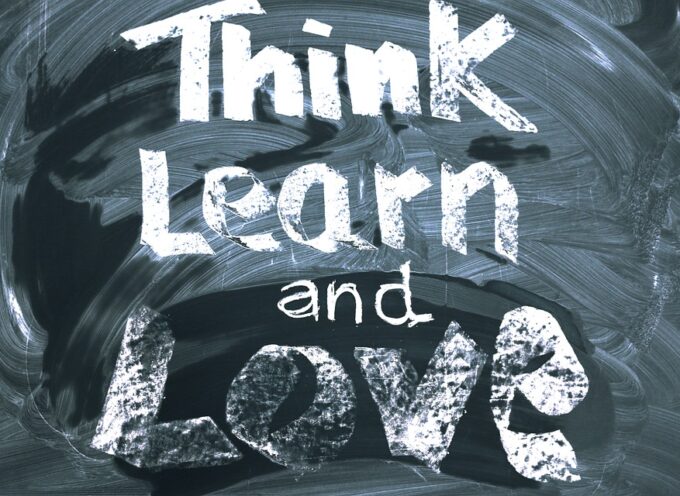It’s sad, but true. I had already graduated with a Ph.D. before I really learned to get the most out of a book. It’s not that I hadn’t read many books or hadn’t read them with serious intent. I had been a serial reader since I was a small child. I had studied books in order to prepare for exams, evaluate them for critical reviews, or interact with them in research papers or journal articles.
But I had not really learned how to get the most out of a book.
Only when I started teaching undergraduate reading seminars at The College at Southeastern did I learn to read a book for all it is worth. In those “History of Ideas” seminars, I led students to read many of the greatest books ever written, including great works of fiction (e.g. Dante, Virgil, Milton, Chaucer), philosophy (e.g. Plato, Aristotle, Kant, Hegel, Marx), history (e.g. Herodotus), and theology (e.g. Augustine, Aquinas, Erasmus, Luther).
As my freshmen and sophomore college students wrestled with reading some of the greatest books ever written, I realized that I needed to teach them the art of deep reading as well as critical evaluation.
In order to help my students, however, I knew I needed to improve my own ability to get the most out of a book. So I read Adler and Van Doren’s How to Read a Book, and I labored to develop my own set of principles and practices. These principles and practices apply not only to the so-called “great books,” but to contemporary books.
In order to convey the five principles, I’m going to focus on how to read a non-fiction book for all it is worth, and the examples I use will be from contemporary texts.
1. Approach a book with 2 goals in mind.
Many books are not worth reading at all. Other books are worth reading, but not worth reading in-depth. Yet, some books are valuable enough that we want to read them “in-depth,” for all they are worth. A book might be valuable to me because the writer is a great thinker, the subject matter is important, my final grade depends on it, or any number of other good reasons.
Regardless, if a book is valuable to me, I want to read it with two goals in mind: deep-level comprehension and critical evaluation. Those two goals usually cannot be achieved merely by reading through the book sentence-by-sentence and chapter-by-chapter, in the hope that I’ll reach its conclusion with a well-formed, wise, and judicious evaluation in mind.
Most people will find that a multi-step process is necessary if they are going to really understand a book and provide a perceptive evaluation of it.
2. Read for comprehension by following these 3 steps.
In order to really understand and remember a book’s thesis, argument structure, and other particularities, the reader must put forth some real effort.
a. Read the book actively, not passively.
Read the book actively rather than passively. For me this means reading with a pencil and ruler at hand so that I can underline and annotate. I underline topic sentences and passages that represent significant twists and turns in an author’s thought process, and I underline quotes that are especially good, bad, witty, or interesting in some way. In addition to underlining, I often make notes in the margins, annotating any questions, exclamations, or criticisms that come to mind.
If you will read the book actively in this manner, your reading will never be “lost.” You’ll be able to come back to the book years later even, able to re-read the book in a few minutes’ time by following the trail of your underlining and annotations.
b. Create an expanded outline of the book’s ideas and arguments.
For those books that are very valuable, consider making an expanded outline. If you have read the book actively, underlining and annotating as you go, you will find it quite easy to make an expanded outline.
When I taught great books for my students’ reading seminars, I made expanded outlines that were 10-20 pages long. I made a heading for each chapter of the book, stated the author’s thesis or purpose, outlined the structure of the chapter, and included quotations that were especially good, bad, witty, or especially helpful in some other way. I also included my own initial reflections on the author’s ideas.
c. Create a one-page visual map of the book.
Many students also benefit from making a one-page visual encapsulation of a book’s structure and argument. Sometimes a one-page visual encapsulation helps the reader not only to memorize the most important components of a book, but also helps them to relate the components to one another.
Just below is an example of a one-page summary I made of Michael Goheen’s A Light to the Nations: The Missional Church and the Biblical Story. Mike’s book has six core chapters, each of which serves as a summary of a moment in the life of God’s people, within the broad overarching biblical story. For that reason, my one-page summary is linear, moving from left to right on the page. Summarizing the book in this manner, I am able to see the flow of Mike’s argument, see how the component parts of a given chapter relate to the other parts, how each chapter relates to other chapters, and reflect on the overall effect.

3. Evaluate a book critically by asking these 9 questions.
After having read the book for understanding, you are now reading to evaluate it (Of course, the tasks of comprehension and evaluation cannot be separated neatly. Even as you read for comprehension, you are evaluating; even as you evaluate, you are comprehending at a deeper level.). As you reflect back on the book and on other people’s reviews of the book, here are twelve types of questions that will help you engage in a substantive critical evaluation:
a. Is the book faithful to the Bible’s teaching?
The first question asks whether the book’s argument and content resonate with biblical teaching. Does it take into account any biblical teaching that relates directly to the subject at hand (proof texts)? Does it take into account biblical principles that relate indirectly to the subject at hand (narrative, worldview)? Whether or not a book displays biblical fidelity will differ a bit based on whether we are evaluating a systematic theology text, on the one hand, or, say, a political philosophy text, on the other hand.
b. What are the author’s worldview presuppositions? Are they true to reality?
Every author presupposes certain things about reality, and these presuppositions form the framework within which his or her ideas and arguments grow. The second question, therefore, asks whether the author’s worldview presuppositions are true to reality. Is it logically coherent (does it contradict itself or not?), empirically adequate (does it make sense of the outer world, by comporting with historical and scientific certainties?), and existentially viable (does it make sense of the inner world, comporting with the realities of the human soul)?
c. For whom might the book be significant?
Most books are significant for some people, but not for others. For that reason, the third question centers on significance: Is the book significant for first-year college students but not for accomplished scholars? For Canadians but not for Chinese? For psychologists but not for brick-layers? For pastors but not for lay people? And so forth.
d. Does the text wrestle with difficult questions?
Some books wrestle with the especially difficult questions on a given topic while others bypass those questions. Some books stay on the surface while others go to the depths. For that reason, we should ask, as John Frame once put it, “Does the text wrestle with difficult, or only with easy, questions?… Does it get to the heart of the matter? Does it note subtle distinctions and nuances that other writers miss? Does it show extraordinary insight of some kind?” (“Appendix E,” The Doctrine of the Knowledge of God)
e. Does the author communicate his ideas clearly and effectively?
A fifth question centers on whether or not the author has communicated clearly and effectively: Does the author write lucid sentences? Does he employ proper transitions between ideas? Does he define key terms? Is the book well-structured in order to carry out the argument? Is the writer’s style appropriate to the subject matter and to his target audience? Is it creative, surprising, or unique in its communicative approach?
f. Does the author exhibit literary virtues?
A sixth question considers the author’s character and tone in writing a book. Is the author fair to his opponents, or does he misrepresent them, question their motives, or mock them? Does he cite sources properly, or does he draw upon other authors without recognizing that he is doing so? Is he willing to recognize the good that is found in his opponents or in books and authors found within the purview of his book’s subject matter?
g. Does the book exhibit proper emphases?
A seventh question focuses on the author’s emphases: Does the author overemphasize or underemphasize certain aspects of his subject mater in such a way that significant problems arise? (Frame notes that there is no single normative emphasis, and authors shouldn’t be criticized for emphasis unless it leads to significant problems elsewhere in the argument.)
h. How does the book compare to other similar books?
An eighth question asks how the book compares and contrasts with similar books: Is it better or worse than those books? Is it similar to them or different than them in terms of conclusions, applications, structure, approach, etc.?
i. Have I, the reader, been fair to the author?
A final question concerns whether I, the reviewer, have been unfair to the author? Have I expected more out of him or her than one could possibly expect? Have I demanded that the author do things that might be out of his control (such as increasing the length of the book or changing its title)? Have I criticized him for not being interested in the aspects of his subject area that interest me, the reader, but that are not essential to his argument?
4. Write a review of the book before placing it on your mental shelf.
Now that you have read the book for all it is worth, consider writing a review of it. You might review it for Amazon.com, for your own website, for a literary website, or for a journal or magazine. Doing so will offer other people a perspective on the book that might benefit them. It will also help you sharpen your own thinking. Even though you’ve already sketched out an evaluation in you mind or on paper, the process of writing will force you to sharpen the evaluation and make it better.
After having read the book for all it is worth, and written a review of it for your own benefit and for others, you are now ready to place the book on your “mental shelf,” so that it can be retrieved for ongoing appropriation and evaluation.
5. Draw upon other resources that teach you how to read a book.
Finally, I recommend engaging in a process of “continuing education” by reading books about reading. Here are three of the best:
Tony Reinke, Lit! A Christian Guide to Reading Books (Crossway, 2011). This is the best one-stop introduction for a beginning or intermediate reader. In less than 200 pages, Reinke provides the reader not only with a theology of books and reading, but also a wealth of practical advice.
James W. Sire, How to Read Slowly: Reading for Comprehension (Water Brook, 1978). In less than 200 pages, Sire coaches the reader on how to read nonfiction, poetry, and fiction; how to determine the broader context—biographical, literary, historical, and ideological—in which the author wrote; and how to know what to read and when.
Mortimer J. Adler and Charles Van Doren, How to Read a Book, revised and updated (Simon & Schuster, 1972). This is the classic guide to intelligent reading. The authors explore different dimensions of the act of reading, teach how to engage in analytical reading of a book, and coach the reader how to comprehend and evaluate various genres—imaginative literature, stories, plays, poems, history, science, mathematics, philosophy, and social science.
Subscribe
Never miss a post! Have all new posts delivered straight to your inbox.








You are quoting from Frame. I assume John Frame. Where does it come from?
Whoops! I forgot to give the title. It comes from “Appendix E: Evaluating Theological Writings” in his book, “The Doctrine of the Knowledge of God.”
Do you write or type out your expanded outline of the book’s ideas and arguments?
Noah, normally I type it out. but handwriting is proven to connect with your memory better than typing. So, although handwriting is not as actionable as typing (e.g. saving, forwarding), it is memorable.
I like your suggestion to have a pencil with us as we read to help us read actively by taking notes. My husband and I will be moving to Alaska later this year, and I like the idea of reading some memoirs of the early pioneers there so I can learn more about the history of the area. I don’t read non-fiction books very often, so the tips you shared here will be really helpful! https://jzonayreitz.com/product/jzonay-reitz-3/
As you mentioned, when reading a book you should ask yourself if the author communicated his ideas clearly and effectively. My sister has really gotten into books about the political structure of the past. It would be interesting to have her answer these questions about a book she just read. https://johnewade.com/2020/04/wisdom-for-heaven-on-earth/